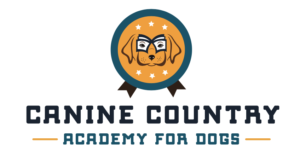Perhaps we’ve all been there… all excited about your big branding pitch, replete with concepts, colors, and logos… only to be greeted by tepid, and worse… non-sensical feedback from your client. As the biz dev guy, I cringe as I start to watch the most creative people I know sink into their conference chairs.
The problem is that — well, for us lucky ones on the pitching side of the table — our collective ego can crumble in an instant. Slowly, it turns into a finely-tuned defensive front, aimed squarely at Mr. or Ms. Client person with forced smiles, bitten tongues, and masterful shade aimed to the execs who apparently know what’s cool. But we wanted a warm, gooey hug after pouring our soul into this visual masterpiece (obvi), not veiled rejection!
Many experts, like Coughter (2012) and Huang (2013), stress the key is to prepare emotionally and intellectually for your pitch. While I agree, this doesn’t happen overnight. The actual preparation should start well before your creative folk even hit that adorable Adobe icon after the first concept meeting.
I know what you’re thinking… no kidding, you’re design team should be strategic? No way! Well it’s settled then, down payment on the yacht. In reality — and I don’t think this is a stretch — designers can be eccentric. Introverted. Fragile. Cooler than I’ll ever be. But too often, their strategic involvement is a quick debrief about the client, then it’s put on the ol’ headphones, open up 1000 tabs, make art, notify boss. For most firms, surely these designers gather ‘round for a show and tell, but HOW are they then explaining their design? Does it fit the concept? What do the colors, or shapes, or for some reason that funny bird they put on the logo really mean?
Here’s the rub: I bet they do know, but do they know they should convince the agency first? Is the work just pretty or cool… or does every element have a significance to the client? And have you provided a “safe space” for them to present their work — and empowered them to first convince your internal team why their design is right for the client.
While there are countless categories to examine about coaching your creative team to think strategically, here’s one tactical example that shows this in action at my firm…and it was born out of necessity. Overall, it means account managers should contribute as co-creative strategists as well — and get their you-know-what together first.
I’ll use one of my very first re-branding clients as an example, way back from 2012: Canine Country Academy — a small but posh dog training school, and a local favorite.
After discovery with the client, our first big idea was to re-think their brand strategy….not “Canine Country Academy,” but let’s re-launch as “Canine Country: Academy for Dogs.” This lead to the idea of emulating a travel site, almost as if the audience is planning a visit to a country made for dogs. This theme had legs (ahem…), and it applied in a neat way to their various dog training courses (Puppytown, Sportenberg) and other aspects of their customer experience (local customs, city officials, plan your trip…stuff like that. Branding is fun!) Kinda cheeky, but it sure resonated with the client. After approval, I simply explained the brand in a concept meeting with three of my designers, and sent them off to their Adobe palace.
When the first designs came back, our internal meeting was little rough… the work itself was fine, but the designs lacked any real strategic connection to the brand — most importantly, the designers could not articulate clearly the “why” of the design. There were a few that had merit for their own sake, but we just weren’t nailing the big idea here (some round 1 designs below).
I wanted someone to explain to me what everything meant… “why the yellow?” Or “what does this little squibble mean?” I realized I had ill-prepared them to dig deep into their creative palette, only to do just “go do art.” Moving forward, I standardized a “Client Brief” form, which summarized key discovery information, the competitive audit, and the clear direction of the re-branding (click on link below to see).
Audible Thwap – Visual Kick-off, 052516
Then, I formalized an internal presentation procedure that simulated a client meeting. Instead of gathering around a laptop, I challenged each designer to formally present their ideas, and to articulate how each of their designs aligns with the client’s strategy. This meant they needed to not only reference the Client Brief, but also explain color psychology, what their chosen fonts symbolized, or even the geometry of the logo. Moreover, they should include a deck, not just a design, that walks us through their thought process. This could include key words, mood boards, inspiration or whatever else played a role in their creation. The deck below in an excerpt from their internal pitch:
CCA – Visual Identity Concepts, Internal Pitch (061316)_EXCERPT
Granted, some of my senior designers were great at doing this informally, but weren’t too keen on the “mock pitch” so early in the process. However, one of my junior designers, Mia, really embraced it. She remarked that it forced her to really think strategically about the client, rather than the design itself. Before her presentation, she said “I keep hearing about the dogs from you, but the client seems to be more focused on making the owners better.”
With that, she presented a design that stressed communication: a sound wave symbol.
Next, she explained that pattern can be used as an icon, or expanded into an map-like shape (the Canine Country). She chose green and brown as their brand colors, but presented WHY…. she neatly referenced some authors, but remarked that she just wanted to conjure the idea of enjoying the outdoors. Good enough! (The accent colors were chosen as complements.)
Finally, she went for the gut punch:
“I read that the owner recently lost her own dog, so I found a picture of her beloved pup on her Facebook. So I made the sound wave icon her actual dog.” Tears!
Here’s what’s truly awesome: because of her hard work, the mock presentation generated a conversation about what truly happens at Canine Country. They train humans! This resulted in a great tagline, and really helped to re-direct the brand itself.
While it’s not the most amazing logo anyone has ever seen, it was an important moment for my company: we connected emotionally with my client! Plus, my designers were now informed in a way pitch experts like Coughter (2018) stress: they thought about “selling” the work! However, it was knowing that they had to that integrated into their design process, which ultimately lead to an emotional reaction – and a win — from the client. My design team got better, and I became a more prepared collaborator in the process. Taking it a step further, I started involving my design team in the discovery itself, which lead to even better strategic insight from our designers.
Overall, keep your designers engaged strategically with the client throughout the conceptual process —and get them to articulate their work VERY early. When the pitch rolls around, they will not only be rehearsed, but a trained seller of great ideas, with design to match … perhaps there will be no more need for shade!
Thanks for reading!
Tripp
PS Canine Country was sold to a new owner last year, and their website is now a tad wonky… but check ’em out here: http://www.caninecountryacademy.com/
References
Coughter, P. (2012). The art of the pitch persuasion and presentation skills that win business. New York: Palgrave Macmillan.
Huang, A. (2013, July 17). Drop Your Ego, Mr. Perfect Designer! Onextrapixel.com. Retrieved from website: https://onextrapixel.com/drop-your-ego-mr-perfect-designer/






5 Responses to Coaching Your Design Team to Think Strategically… RIGHT AWAY.